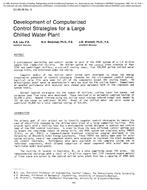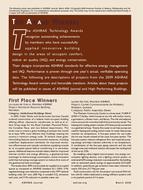Continued improvements in building envelope technologies suggest that residences soon will be routinely constructed with low heating and cooling loads. The use of novel building materials containing active thermal components (e.g., phase change materials (PCMs), subventing, radiant barriers, and integrated hydronic systems) would be an ultimate step in achieving significant heating and cooling energy savings from technological building envelope improvements. PCMs have been tested as a thermal mass component in buildings for at least 40 years, and most studies have found that PCMs enhance building energy performance. However, problems such as high initial cost, loss of phase-change capability, corrosion, and PCM leaking have hampered widespread adoption. Paraffinic hydrocarbon PCMs generally performed well, but they increased the flammability of the building envelope. Traditionally, PCMs were used to stabilize interior building temperature. Thus the best locations for PCM were interior building surfaces—walls, ceilings, or floors. In research under way at Oak Ridge National Laboratory (ORNL), PCM is used as an integral part of the building thermal envelope. Microencapsulated paraffinic PCM is positioned in the wall cavity or installed as a part of the attic insulation system. This paper summarizes the results of experimental and theoretical analysis performed at ORNL during 2003–2006.
Presented at Thermal Performance of Exterior Envelopes of Whole Buildings X – December 2007
Units: Dual
Citation: Thermal Performance of Exterior Envelopes of Whole Buildings X
Product Details
- Published:
- 2008
- Number of Pages:
- 8
- File Size:
- 1 file , 6.7 MB
- Product Code(s):
- D-BldgsX78


